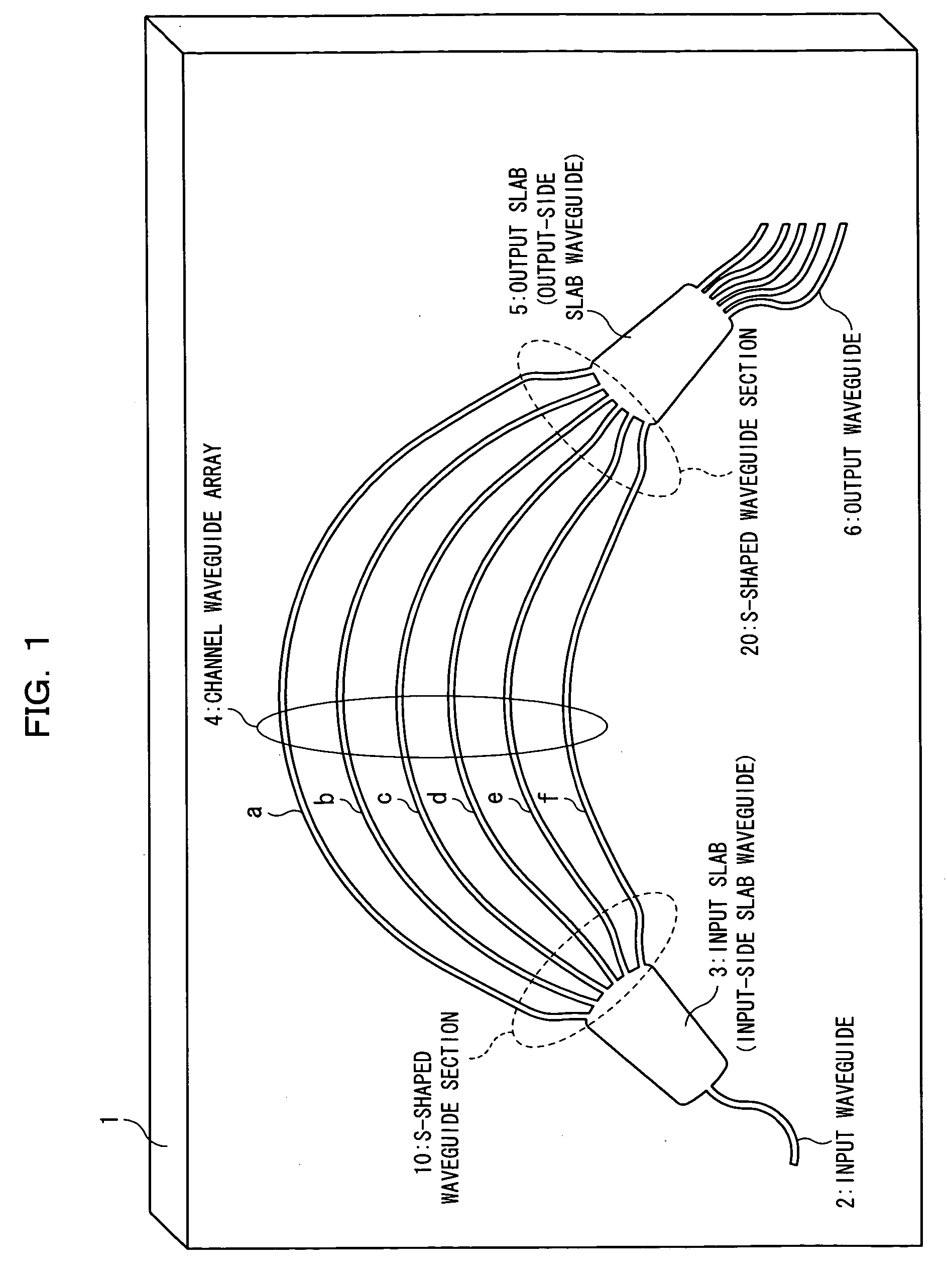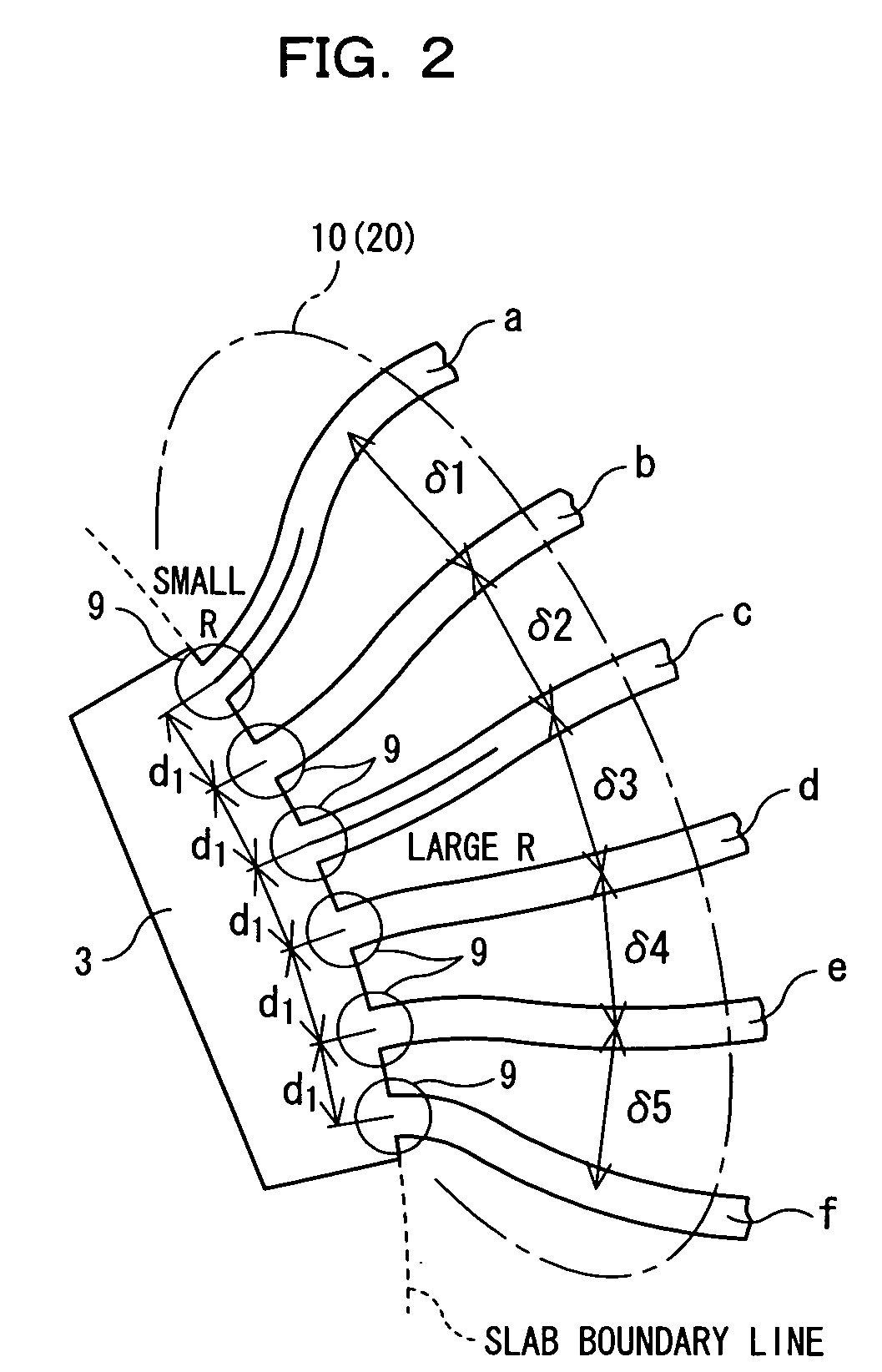Arrayed waveguide wavelength multiplexing apparatus and optical transmitter
a wavelength multiplexing and waveguide technology, applied in the direction of optical waveguide light guides, instruments, optical elements, etc., can solve the problems of deterioration of optical signal characteristics, side lobe crosstalk deterioration, dampening, etc., to increase the density of individual hardware components, promote cost reduction, and expand the utilization of wavelength division multiplexing
- Summary
- Abstract
- Description
- Claims
- Application Information
AI Technical Summary
Benefits of technology
Problems solved by technology
Method used
Image
Examples
first embodiment
(A) Description of the Present Invention
[0079]FIG. 1 is a block diagram of an AWG according to a first embodiment of the present invention. An AWG 1 shown in FIG. 1 can realize a multiplexing function as a wavelength multiplexer for multiplexing optical signals of different wavelengths and a wavelength division function as a wavelength divider for dividing multiplexed light into optical signals of different wavelengths. The AWG comprises a substrate 1 (AWG 1), and optical waveguides collectively fabricated on the substrate 1 through use of photolithography. The AWG has an input waveguide 2, an input slab (an input-side slab waveguide) 3, an arrayed waveguide (a channel waveguide array) 4 formed from six channel waveguide groups “a” to “f,” an output slab (an output-side slab waveguide) 5, and an output waveguide 6 formed from six waveguides “h” to “l” (el).
[0080] Here, wavelength-multiplexed lights #1 to #6 are transmitted in a direction from the input waveguide 2 toward the output...
second embodiment
(B) Descriptions of the Present Invention
[0155] In the first embodiment, the locations where the S-shaped waveguides 10, 20 are formed are in the vicinity of the areas of the channel waveguides “a” to “f” connected to the input slab 3. However, the areas may be changed. In the second embodiment, the S-shaped waveguide section is provided in the input waveguide 2 of the AWG.
[0156]FIG. 12 is a block diagram of an AWG according to the second embodiment. An AWG 1c shown in FIG. 12 is formed such that the channel waveguide interval d1 in the neighborhood of an area of the input waveguide 2 connected to the input slab 3 becomes wider than the channel waveguide interval d1 in the area of the input waveguide 2 connected to the input slab 3 (the third connection section). The AWG 1c is formed such that the channel waveguide interval d1 in the neighborhood of an area of the output waveguide 6 connected to the output slab 5 becomes wider than the channel waveguide interval d1 in the area of t...
PUM
 Login to View More
Login to View More Abstract
Description
Claims
Application Information
 Login to View More
Login to View More - R&D
- Intellectual Property
- Life Sciences
- Materials
- Tech Scout
- Unparalleled Data Quality
- Higher Quality Content
- 60% Fewer Hallucinations
Browse by: Latest US Patents, China's latest patents, Technical Efficacy Thesaurus, Application Domain, Technology Topic, Popular Technical Reports.
© 2025 PatSnap. All rights reserved.Legal|Privacy policy|Modern Slavery Act Transparency Statement|Sitemap|About US| Contact US: help@patsnap.com



